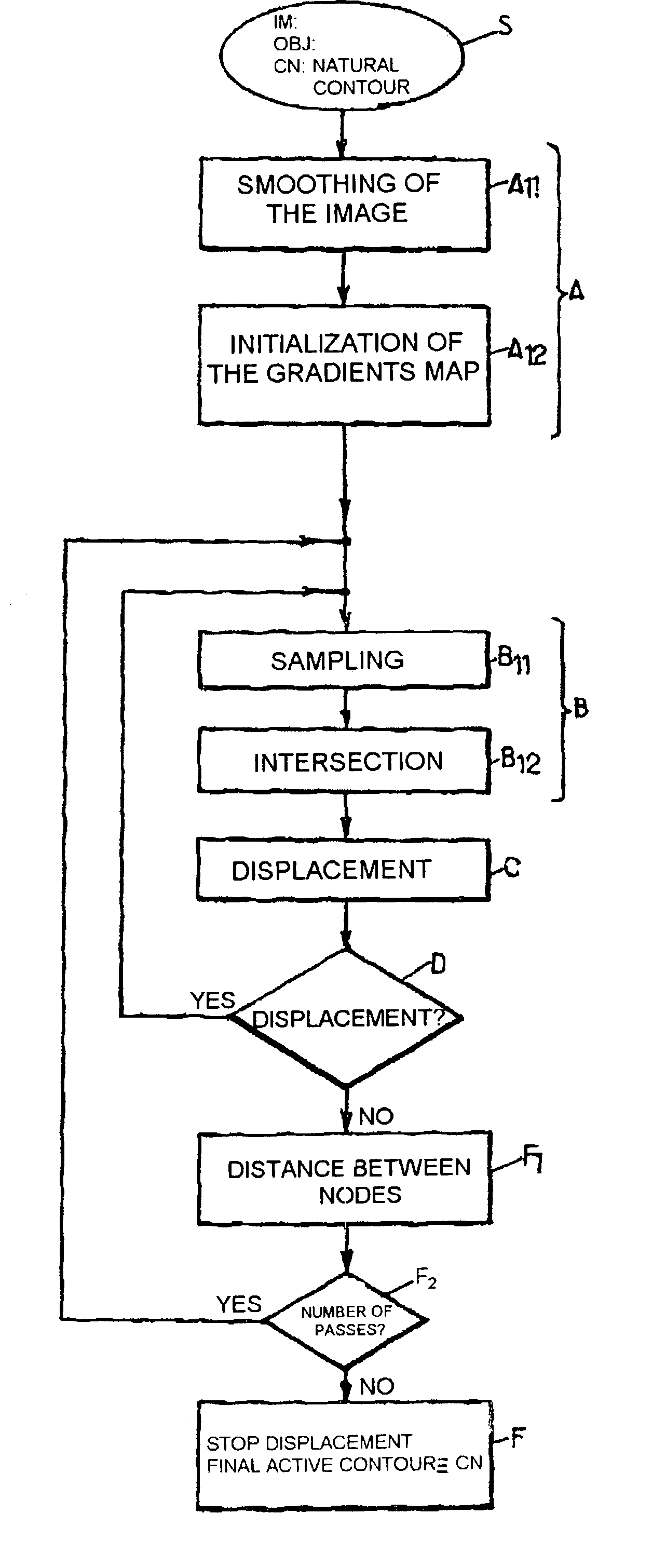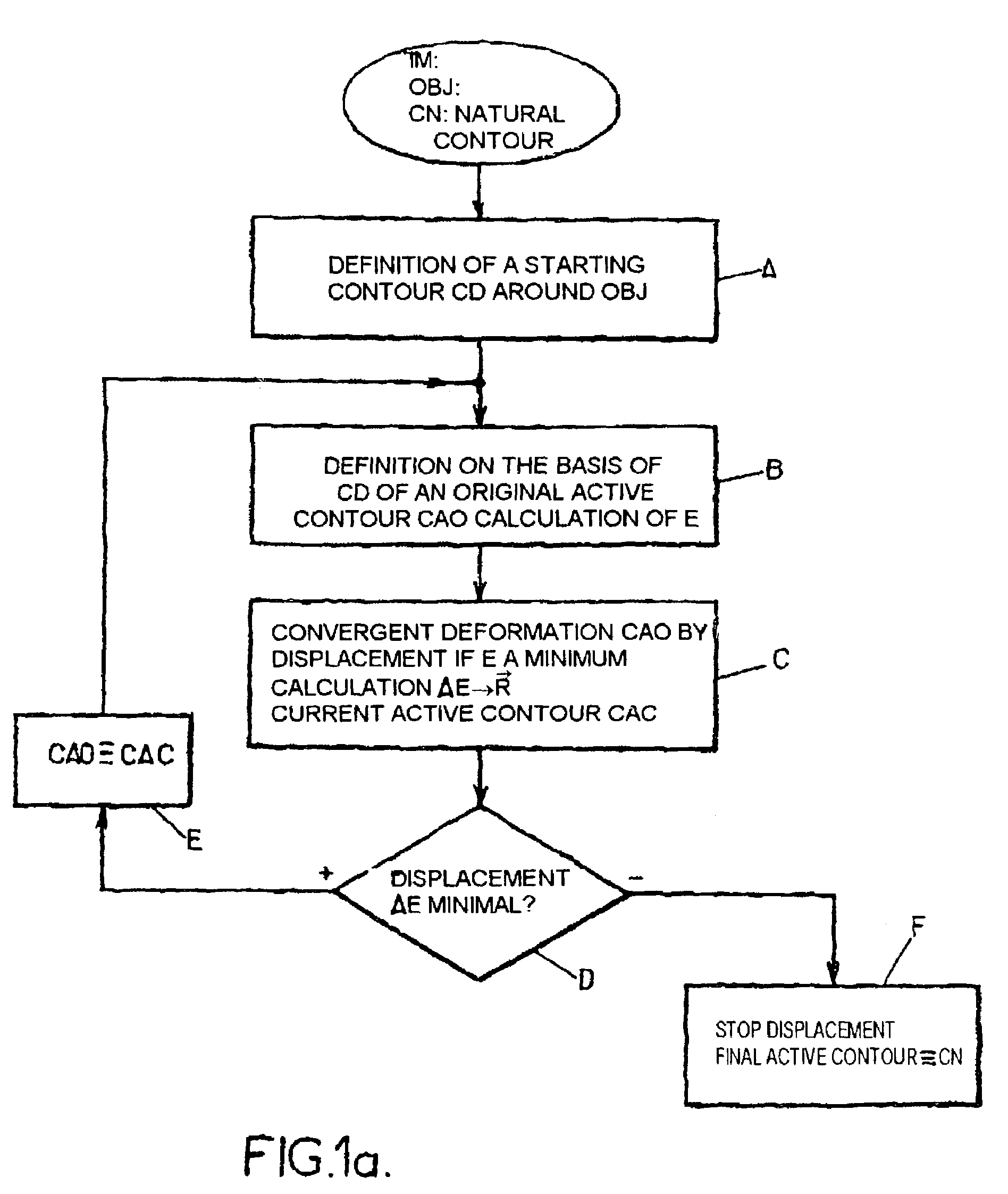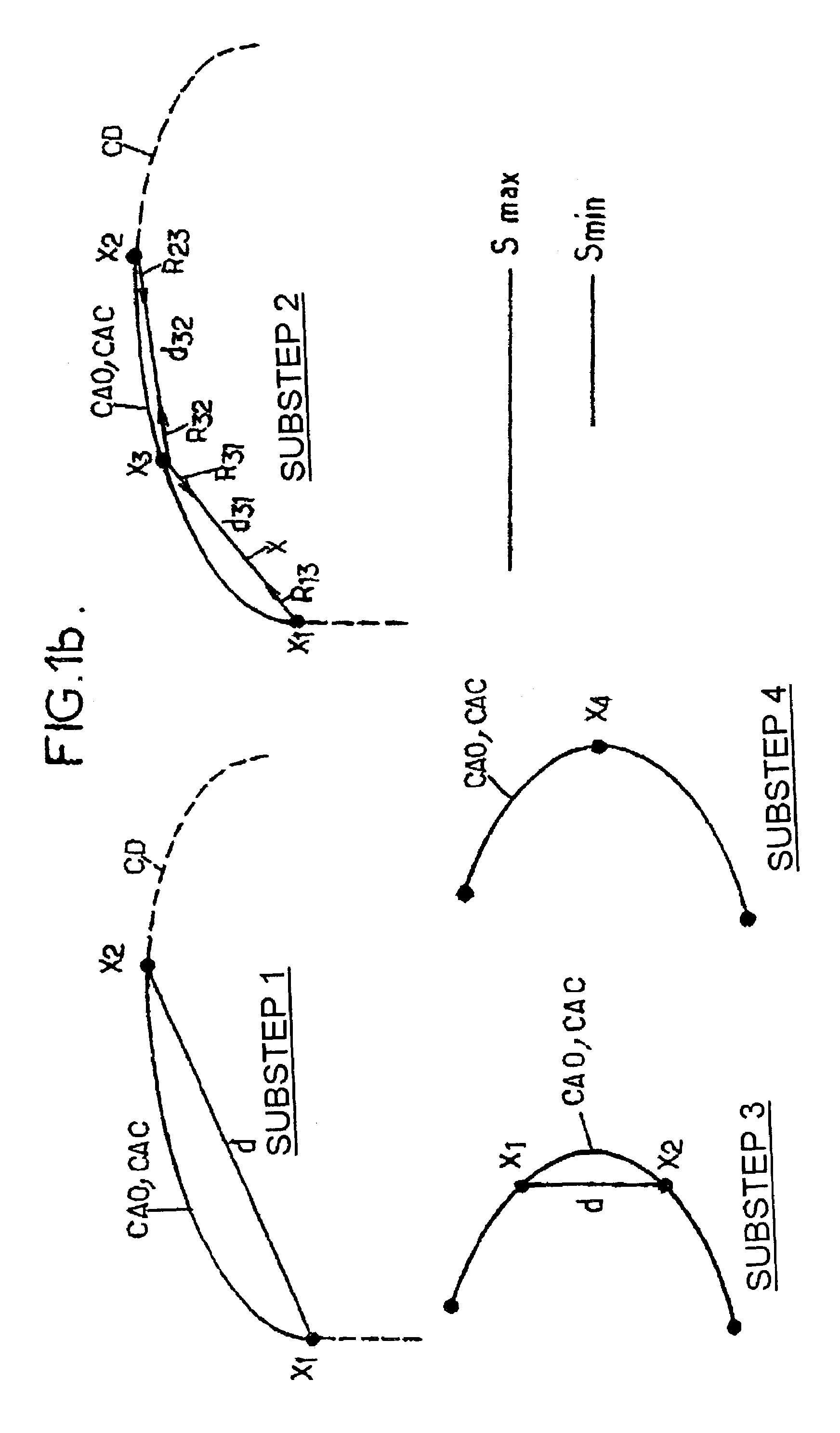Method for segmenting a video image into elementary objects
a video image and elementary object technology, applied in the field of video image segmentation, can solve the problems of difficult retrieval, inability to reproduce the functioning of human visual and cognitive system, and inability to allow image segmentation based on elementary objects
- Summary
- Abstract
- Description
- Claims
- Application Information
AI Technical Summary
Benefits of technology
Problems solved by technology
Method used
Image
Examples
Embodiment Construction
[0066]The aforesaid step A is then followed by a step B consisting in defining, on the basis of the starting contour CD, an original active contour, denoted CAO, formed by a set of nodes distributed around this starting contour.
[0067]The step B is then followed by a step C of convergent deformation of the original active contour CAO by displacing at least one of the points of the original active contour CAO toward the elementary object OBJ, and in particular toward the natural contour of the elementary object.
[0068]In accordance with a noteworthy aspect of the method which is the subject of the present invention, the deformation of the original active contour CAO is performed by displacing toward the natural contour of the elementary object at least one of the nodes of the original active contour, this displacement being normal and centripetal to the original contour CAO, dependent on the elastic energy (or spring term) obtained on the basis of the distance of the adjacent nodes fro...
PUM
 Login to View More
Login to View More Abstract
Description
Claims
Application Information
 Login to View More
Login to View More - R&D
- Intellectual Property
- Life Sciences
- Materials
- Tech Scout
- Unparalleled Data Quality
- Higher Quality Content
- 60% Fewer Hallucinations
Browse by: Latest US Patents, China's latest patents, Technical Efficacy Thesaurus, Application Domain, Technology Topic, Popular Technical Reports.
© 2025 PatSnap. All rights reserved.Legal|Privacy policy|Modern Slavery Act Transparency Statement|Sitemap|About US| Contact US: help@patsnap.com



